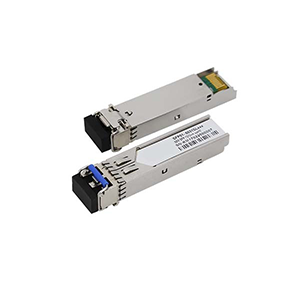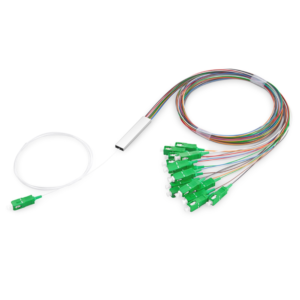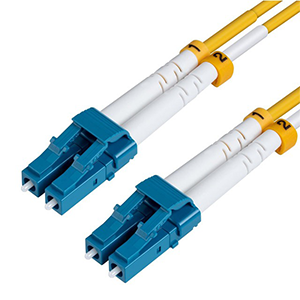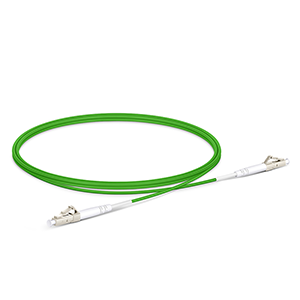As a person who is passionate about network technology, I know the importance of Network Adapter Card in building an efficient and stable network connection. In this article, I will take you to explore the definition, function, different types and classifications of Network Adapter Card, as well as key technical parameters and performance indicators. We’ll also take a closer look at how to select and configure a Network Adapter Card, as well as how to troubleshoot and optimize its performance. In addition, we will also explore the security and privacy protection of Network Adapter Card, as well as its integration and interconnection with other network devices. Finally, look forward to the future development trends and new technology applications of Network Adapter Card, which will bring you unlimited network connection possibilities.
Definition and function of Network Adapter Card
First, let us understand the basic concept of Network Adapter Card. Network Adapter Card, also known as network adapter card, is a computer hardware device responsible for converting and transmitting data between the computer and the network. It is the link between the computer and the network, converts the data inside the computer into a form that can be transmitted by the network, and converts the network data into data that can be recognized by the computer.
Types and classifications of Network Adapter Card
Network Adapter Card can be divided into wired and wireless types according to different connection media and interface types. The wired Network Adapter Card is connected to the network through an Ethernet cable, providing stable and high-speed data transmission. The wireless Network Adapter Card connects to the network through wireless signals, providing a convenient connection method for mobile devices and wireless networks.
In addition, Network Adapter Card can also be classified according to its interface type, such as PCI, PCIe, USB, etc. Different types of interfaces are suitable for different computers and devices, so interface compatibility needs to be considered when selecting a Network Adapter Card.
Main technical parameters and performance indicators of Network Adapter Card
When choosing a Network Adapter Card, it is crucial to understand its main technical parameters and performance indicators. Among them, transmission speed and bandwidth are key performance indicators of Network Adapter Card, which directly affect the efficiency and speed of data transmission. In addition, the interface type and compatibility are also very important to ensure the compatibility of the Network Adapter Card with the computer hardware and operating system.
Other technical parameters and performance indicators include transmission media type, supported network protocols, signal range, power consumption, etc. According to your own network needs and usage scenarios, choosing a Network Adapter Card with appropriate technical parameters and performance indicators can provide a better network connection experience.
How to select and configure Network Adapter Card
Selecting the appropriate Network Adapter Card is crucial to building an efficient network connection. First, we need to consider the computer’s interface type, such as PCI, PCIe, USB, etc., to choose a Network Adapter Card that is compatible with the computer. Secondly, determine whether to choose a wired or wireless Network Adapter Card based on the network environment and needs.
When configuring the Network Adapter Card, we need to ensure that the Network Adapter Card is correctly installed and connected to the slot of the computer motherboard, and install the relevant drivers according to the requirements of the operating system. Configuring the Network Adapter Card’s network settings, such as IP address, subnet mask, gateway, etc., is also a necessary step. With correct configuration, we can ensure the normal working of the Network Adapter Card and the stability of the network connection.
Network Adapter Card troubleshooting and performance optimization
Network Adapter Card may encounter some failures or performance issues. The following are some common troubleshooting methods and performance optimization tips:
-
Check the physical connection: First, make sure the physical connection between the Network Adapter Card and the computer or other device is secure. Check the network cable, plug, and socket to make sure they are not damaged or loose.
-
Driver updates: Network Adapter Card performance and compatibility often rely on correct drivers. Visit the manufacturer’s official website to check if the latest drivers are available and update them. Sometimes, old or incompatible drivers can cause slow performance or unstable connections.
-
Network settings optimization: Optimize the network settings of the Network Adapter Card according to the network environment and needs. For example, adjust the transmission speed and duplex mode, enable flow control and congestion control, etc. These settings can improve the efficiency and stability of network transmission.
-
Network troubleshooting tools: Use network troubleshooting tools to help identify and resolve network connection issues. For example, use a network analysis tool such as Wireshark to analyze network traffic and look for potential problems or anomalies. Alternatively, use the ping command to check whether the connection to other devices is normal.
-
Hardware conflict check: If multiple Network Adapter Cards or other expansion cards are installed in the computer, hardware conflicts may occur. Ensure there are no conflicting IRQ (interrupt request) assignments and that multiple devices are configured and managed appropriately.
-
Hardware troubleshooting: If you are experiencing persistent network problems, the Network Adapter Card itself may be faulty. Try installing the Network Adapter Card to another computer to determine if it is a hardware issue. If it is a hardware failure, the Network Adapter Card may need to be replaced.
Always pay attention to safety when troubleshooting and optimizing performance. Make sure to back up important data before making any changes or settings adjustments, and follow the manufacturer’s recommendations and guidelines.
Security and privacy protection of Network Adapter Card
With the increasing popularity and dependence on the Internet, network security and privacy protection have become particularly important. As a key component of network connection, Network Adapter Card also needs to consider its security and privacy protection.
To ensure the security of the Network Adapter Card, you should first ensure that its firmware is always the latest version. Manufacturers often release firmware updates that fix known security vulnerabilities and provide improvements. Regularly check the manufacturer’s website or use an automatic update tool to get the latest firmware version and update it in a timely manner.
Also, it is crucial to take appropriate security measures. For example, use strong passwords to protect the Network Adapter Card’s management interface, restrict physical access to computers and Network Adapter Card devices, and configure firewalls and intrusion detection systems to monitor network traffic and guard against potential attacks.
In terms of network privacy protection, it is recommended to use encrypted transmission protocols (such as HTTPS) to protect sensitive data transmitted through the Network Adapter Card. Additionally, choose third-party networking software and drivers carefully to ensure they come from trusted sources and have been reviewed for security.
Future development trends and new technology applications of Network Adapter Card
-
Higher-speed transmission: As the amount of data continues to increase, future Network Adapter Cards will support higher transmission speeds to meet the growing network needs.
-
Multi-functional and intelligent: Network Adapter Card will have more functions, such as network traffic management, quality-of-service (QoS) control and virtualization support. In addition, the intelligent Network Adapter Card will be able to automatically adapt to the network environment and optimize according to needs.
-
5G and wireless connections: With the popularization of 5G technology, the Wireless Network Adapter Card will support faster and more stable wireless connections, providing wider network coverage for mobile devices and IoT devices.
-
Network security enhancement: Future Network Adapter Card will enhance network security functions, including hardware-level encryption, authentication and access control, to provide stronger network security protection.
Integration and interconnection between Network Adapter Card and other network devices
Network Adapter Card is not only tightly integrated with the computer, but also interconnected with other network devices. It plays a key bridge role between different network devices to realize data transmission and communication.
For example, a Network Adapter Card connects to a router or switch to connect a computer to a LAN or WAN. It can also be connected to network storage devices to achieve high-speed data transmission and sharing.
In addition, Network Adapter Card can also be integrated with network security devices, such as firewalls, intrusion detection systems, and security information and event management systems. By integrating with these devices, Network Adapter Card can provide more powerful network security and monitoring capabilities.
Through exploring this article, I hope you will have a deeper understanding of the Network Adapter Card and be able to make informed decisions when selecting, configuring, and optimizing the Network Adapter Card to bring excellent results to your network environment. . Let’s embrace the future of network connectivity and open up endless possibilities!





